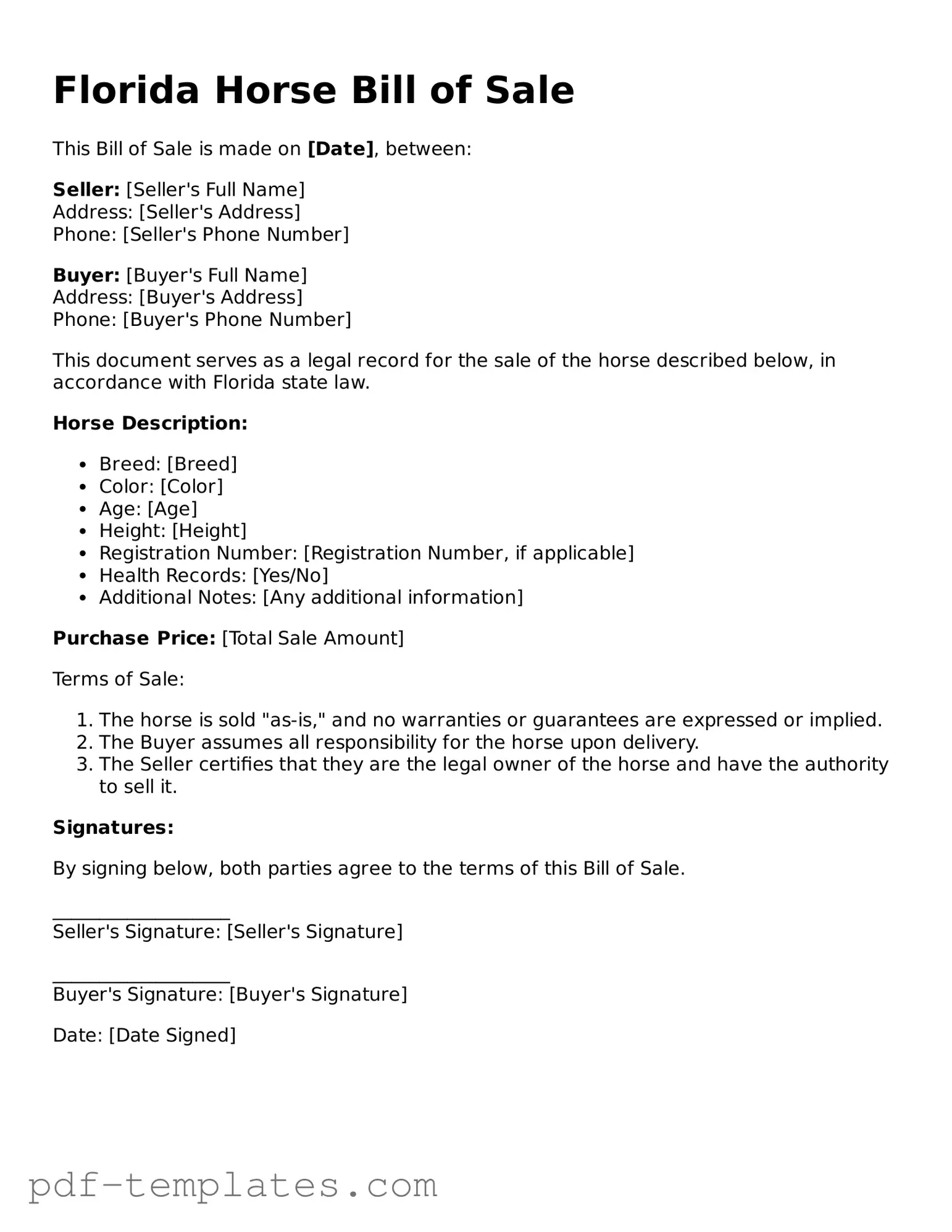The Florida Horse Bill of Sale is quite similar to a Vehicle Bill of Sale. Both documents serve as proof of transfer of ownership from one party to another. Just as the Vehicle Bill of Sale includes details such as the make, model, and VIN of the vehicle, the Horse Bill of Sale provides information about the horse, including its breed, age, and identification details. Each document protects the rights of both the seller and the buyer, ensuring that the transaction is legally recognized and that both parties have a clear understanding of the terms involved.
Another document that shares similarities with the Horse Bill of Sale is the Pet Bill of Sale. This document is used when transferring ownership of pets, such as dogs or cats. Like the Horse Bill of Sale, it outlines important details about the animal, including breed, age, and health status. Both forms aim to provide a legal record of the transaction, which can be vital for future reference, particularly if there are questions about the pet's health or behavior after the sale.
The Boat Bill of Sale is also akin to the Horse Bill of Sale. When someone buys or sells a boat, this document serves to confirm the transfer of ownership. Similar to the Horse Bill of Sale, it contains specific details about the boat, such as its make, model, and registration number. Both documents ensure that the transaction is documented properly, offering protection to both the seller and the buyer in case of disputes or issues that may arise later.
The Equipment Bill of Sale is another related document. This form is used when selling or buying various types of equipment, whether it be farm machinery, construction tools, or other valuable items. Like the Horse Bill of Sale, it includes descriptions of the equipment being sold, along with the terms of the sale. Both documents provide clarity and security for both parties involved, ensuring that the transaction is recognized legally and that the details of the sale are clearly outlined.
For those looking to document their earnings with precision, the ADP Pay Stub form is essential, as it provides a detailed overview of compensation and deductions. Employees can rely on this form to better understand their financial standing and ensure that all information is accurately reflected. If you need assistance with this form, visit pdftemplates.info/adp-pay-stub-form/ for more resources.
Lastly, the Livestock Bill of Sale is closely related to the Horse Bill of Sale. This document is specifically designed for the sale of livestock, which includes horses, cattle, sheep, and other farm animals. Similar to the Horse Bill of Sale, it details the animal's identification, health status, and any warranties or guarantees provided by the seller. Both documents serve to formalize the transaction and protect the interests of the buyer and seller, making them essential for anyone involved in the sale of animals.
